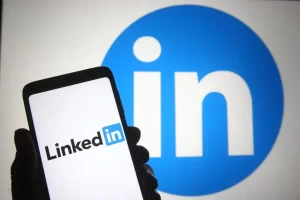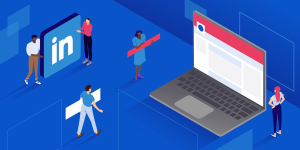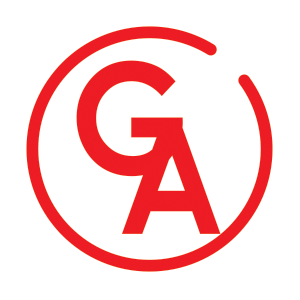
Recruiters using LinkedIn to source and communicate with candidates will soon be able to use generative AI to send personalized messages to prospective applicants.
“We’re rolling out AI-assisted messages in LinkedIn Recruiter that will help you save time and engage with the right candidates, faster,” said Hari Srinivasan, vice president of product at LinkedIn. “This is just the beginning of how we’ll use generative AI to help you hire in Recruiter.”
LinkedIn Recruiter is the networking site’s hiring platform. Srinivasan said that “a handful of customers” in the U.S. and Europe can use the feature now, with a broader rollout planned for later in June.

How It Works
Srinivasan explained that once a Recruiter user finds a candidate, they can click a button to draft a personalized message using InMails, LinkedIn’s email which can be used to directly message another LinkedIn member without sending a connection request first.
“Using our own LinkedIn in-house generative AI model trained on successful InMails, we use the information from the candidate’s profile, job description and the recruiter’s company to draft a highly personalized message to get the conversation started,” he said. The user can then further customize the message before sending it.
Colleen Garrett, SHRM-CP, senior director of clinical talent acquisition and operations at Expressable, an online speech therapy provider in Austin, Texas, said that personalized outreach is the only effective method for attracting quality candidates. “Personalized outreach doesn’t have to be reinvented each time, but it does need to make the candidate feel that they’re not just another InMail or another lead,” she said.
“Always put yourself in the candidate’s shoes,” said Danielle Bailey, senior manager of talent acquisition at Altria, a tobacco products manufacturer in Richmond, Va. “Think about how you would like to be approached. No one wants to be spammed, and no one wants to feel like they were part of some lazy recruiter’s bulk messaging.”
“We know that personalization works,” Srinivasan said. “When recruiters personalize InMails, they see a 40 percent increase in acceptance rates.”
Two Views
Garrett said that AI-assisted messages could not have come at a better time, with employers tightening and reallocating resources.
“We are all doing more with less, but in talent acquisition, the one thing you cannot restrict is the emphasis on maintaining a high-quality candidate experience,” she said. “With AI-assisted messaging, small recruitment teams can decrease the time it takes to craft a message that shows potential candidates why they’re the right fit based on their personal career journey for your role. What took 10 minutes in extrapolating from a profile now becomes a routine experience where the hirer can focus on the finesse and craftsmanship of their message.”
But Bailey is not sold on the new feature. She believes it will make InMails, “which people are already inundated with,” sound more like spam.
“I fear this is going to make the spammy sounding InMails worse off,” she said. “Think about being contacted by a few people from the same company, sending the same message, and how spammy that is. Now imagine this on a much larger scale—many people contacting you via InMail with the same or similar message, but from different companies.”
She said that recruiters would be better off learning how to write better InMails than relying on the AI assistance. “If a recruiter really needs a starting point, this may be helpful, but my advice would be to attend webinars and/or conferences or look up articles and blogs on best practices for creating a personalized message,” she added.
Garrett said that AI-assisted messaging will be a useful tool, but it’s important to remember that AI is just a tool and not a replacement for the human component of recruitment. “Relationship management is at the heart of everything we do as talent acquisition professionals, and AI simply helps us be more effective and efficient at how we can continue to deliver on providing the highest quality candidate experience possible,” she said.
LinkedIn also recently introduced separate AI-enabled features to help recruiters draft job ads and assist job seekers in crafting profiles.
Microsoft is the parent company of LinkedIn and has heavily invested in OpenAI, which recently made a big splash with its generative artificial intelligence product, ChatGPT.
